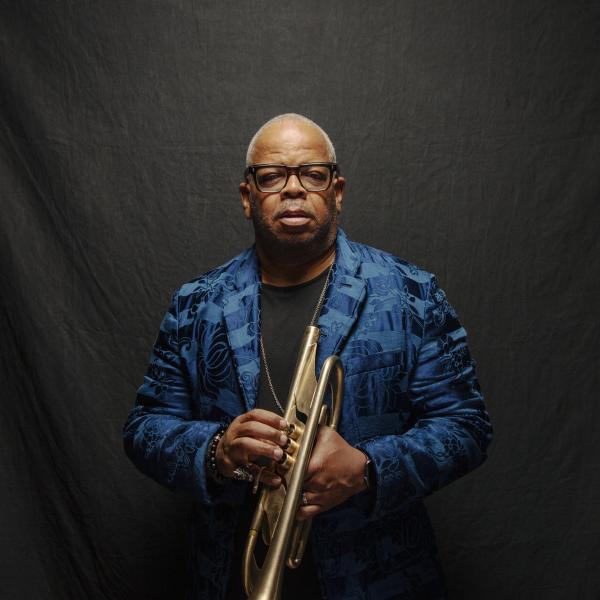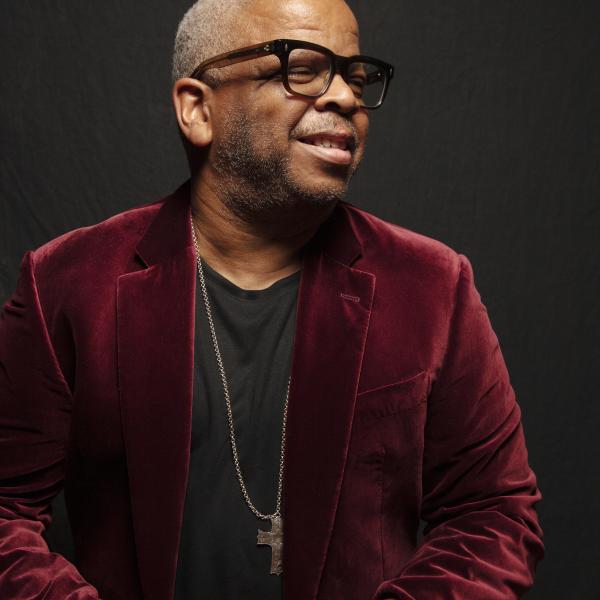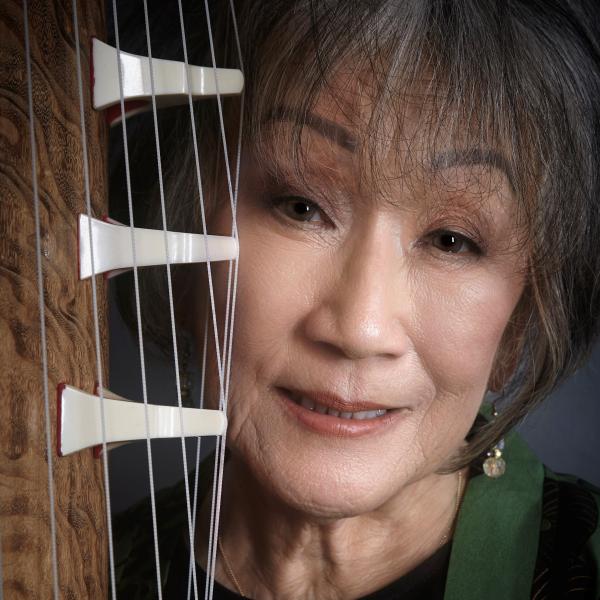Bill Frisell: The Guitar is My Voice
Bill Frisell: I’m Bill Frisell and I play the guitar and, well, I love music, I play music, that’s pretty much all I’ve done my whole life.
Cadillac 1959 under fades into Lovesick Blues
Well,
I mean really I think pretty much for as long as I can remember I think
music, you know I kind of connect it, my earliest memories I think are
when my family first got a television or, and I’d see cowboys on TV
playing the guitar, or “The Mickey Mouse Club” or, but it probably goes
back even further than that, hearing my mother sing songs around the
house or something, it’s just, it’s pretty much been around my, it’s
just been a part of my life the whole way and it was in, when I was in
fourth grade the school had a, I grew up in Denver and they had, you
know they would come around to classes and ask if anybody wanted to play
an instrument and that’s when they would start up the, that was the age
I guess when they thought you were ready to pick an instrument. So I
started playing clarinet in the school band and that was my beginning,
the beginning of kind of a more formal training I guess, but I feel so
lucky that that was there at that time and. Then a couple of years
after that it was the guitar was like, I just couldn’t get enough of the
guitar.
Pipeline up, under
Yeah,
I mean the, you know, as a kid the music was so integrated into just, I
guess it didn’t even, you know, it wasn’t just music you know, it was
hot rods and rocket ships and dinosaurs and thinking about the future
and just, it’s like, as your imagination was, and I grew up, I was born
in 1951 so, it was a time of, you know we’re thinking about going to
outer space and, it seemed like everyone’s imagination was all fired up
and. So when I was a kid you know, I was into hot rods and, never
owned, you know I would fantasize about all this stuff, hot rods and
surfboards and the music was all mixed in with that so, some of the
first stuff I was hearing on the radio or records that I saw were like
surf, The Ventures and the Chantays and the, all those bands and looking
at the covers with all the cool looking guitars on them and stuff and.
So the first record that I ever actually bought was a single, 45, with
“Little Deuce Coup,” you know about a car, on one side and “Surfer Girl”
on the other side, and then now, all these years later, I end up, I
play that song all the time now, I’m still trying to figure it out so.
Surfer Girl under, up
Yeah
there’s just so much music, I mean and it’s just like the tip of the
iceberg too, it’s, could keep, I mean I’ve been playing, with those guys
that we recorded with, with Greg Leisz and Tony Shearer and Kenny
Wilson, we’ve all been playing together for a long, long time anyway you
know there’s more and more songs keep creeping in to what we’re doing,
you could go on forever just with finding material from there.
Bumpin’ on Sunset up, under
When
I was in high school when I heard a Wes Montgomery record, the song
“Bumpin’ on Sunset”, my band director in high school asked me if I could
learn that song for the all-school talent show to back up these girls
that were doing a dance routine and, so he gave me this record and I
went home and I was like wow this is, it was just the perfect moment for
me to hear Wes Montgomery, where it was, that, it became kind of a link
from what I had, all the pop music and things I’d been hearing on the
radio leading up to that point, and music that I was playing in bands
and then, I think it really opened a door to me entering into a whole
nother world. Maybe, I mean maybe it’s all the same world but, I think
that had something to do with me thinking about really knowing that it
was something important, that I wanted to spend the rest of my life
doing.
Soon after I discovered Wes Montgomery I, he was coming to
Denver to play at Red Rocks and I got a ticket to go to that concert,
and he passed away like right, just weeks I think before the concert so I
didn’t get, I never got to see him live. But I went to that concert
anyway so that, it was with Thelonious Monk and Cannonball Adderly and
Gary Burton and Dionne Warwick, it was a traveling Newport show, that
was the first jazz concert I ever saw, which blew my mind. And then the
second jazz concert I ever went to was a few months later, this is when
I’m still in high school, and it was Charles Lloyd Quartet, which
Charles is another NEA Jazz Master right? And in that band was Keith
Jarrett, so it was the, I think it was January, 1969 I went to this
concert, and it was Charles Lloyd and Keith Jarrett playing piano, and
Paul Motion was playing drums who, that’s another person in my life
that’s, I can’t even begin to, the weight of the importance of that
person in my life is, you know, beyond what I can even talk about, I
mean I started to, met and started to play with him in 1981 and played
with him, you know, until he died just a couple of years ago and so,
hearing that group, and Ron McClure was playing bass and, but, you know I
never would have dreamed that, how is that possible, that I would end
up having this time with Paul, and then, in the last couple of years
I’ve been playing with Charles also which is, I just can’t even believe
how these things work you know?
Because I still feel like I’m just
at the beginning of, every day I wake up and I feel like I’m just
starting to play, just trying to figure it out, and then I find myself
at Lincoln Center with that same feeling, I’m just, I’m still trying to
figure out how to play but I’m playing a Keith Jarrett song and he’s
about five feet away from me staring at me and it’s like, what?
Memories of Tomorrow up
When
I’m fully immersed in the music and everything’s working, I’m not
conscious of anything. You know so much of what music is for me is this,
what happens when I play with other people and it’s the dialogue and
the conversation that starts happening, and the back and forth and the,
just the harmony that happens when you’re with other people, and then I
don’t have to think about that so much. But, when I play alone, which
I’m not, I mean more and more and more, I’m becoming more and more
comfortable with playing alone but, that’s where the learning, it’s
taken me so long to learn to be comfortable with that space, like to
play a note and just let it be there, and not feel like I have to fill
it up with something else and, but it’s more, somehow more frightening
when I’m by myself I think because, you know if there’s even just one
other person there you get, right away you get some, you’ll get an
answer back or you’ll get some other information that you can react to,
and then you just move ahead with that or you work with that. But when
you’re by yourself, I’ve never been a good, like a public speaker, like I
failed speech class in school all that kind of stuff, like just to
stand up and generate sentences all by myself without anything coming
back at me is just almost impossible. So, playing alone, it’s like you
play a phrase or you play a melody or play one note, and it, the note
goes out there and then, you know, nothing comes back, it’s like, so
then I have to think of another one to play and, you know hopefully
something starts happening, but it’s a different feeling than when I’m
playing with other people so, it’s been a long process for me to get
comfortable with that, allowing that space to be there, not panicking
and trying to fill up every little crevice with some other sound or
something.
Have a Little Faith in Me up, under…
My
voice is on the guitar, right. I love music, I love the guitar, but I
love music, I love all music and, so the guitar for me, it’s the tool I
use to try to express what is happening in my imagination, and it seems
like always what’s up there is a little bit more than I can…I think
that’s true with any musician, you’re always reaching for something that
you can never quite grasp so what I’m hearing in my head is, I’m just
taking a stab at it you know. I could be hearing a whole orchestra or
the sound of a voice singing or, it could be anything. The guitar’s like
this, I don’t know it’s like a little magic wand or something and I can
never get there but it’s my way of trying to express that. My energy
comes really from immersing myself in the music and just being in it and
it’s the most amazing feeling in the world.
Have a Little Faith in Me up, under closing narration outro.
AK: That was guitarist and composer, Bill Frisell. Special thanks to Phyllis Oyama, Lee Townsend, and Hans Wendl.
Excerpts of the following performed by Bill Frisell.
- “Cadillac 1959” and “Listen” composed by Bill Frisell (from Good Dog, Happy Man and The Intercontinentals, respectively), used courtesy of Nonesuch Records and by permission of Friztone Music (BMI).
- “Lovesick Blues” composed by Hank Williams (from Disfarmer), used courtesy of Nonesuch Records and by permission of EMI Mills Music Inc. /Sony/ATV (ASCAP).
- “Pipeline” composed by Brian Carman and Bob Spickard (from Guitar in the Space Age), used courtesy of Okeh Music / Sony Entertainment and by permission of Regent Music Corp (BMI).
- “Surfer Girl” composed by Brian Wilson (from Guitar in the Space Age), used courtesy of Okeh Music / Sony Entertainment and by permission of BMG Rights Mgmt. (BMI).
- “Bumpin’ on Sunset” composed by John L. (Wes) Montgomery © 1966 (Renewed) Taggie Music Co., a division of Gopam Enterprises, Inc. All rights reserved. Used by permission.
- “Memories of Tomorrow” composed by Keith Jarrett (from live performance at 2014 NEA Jazz Masters concert in NYC), used by permission of Cavelight Music [BMI].
- “Have a Little Faith in Me” composed by John Hiatt (from Have a Little Faith), used courtesy of Nonesuch Records and used by permission of Universal Music Careers (BMI).




